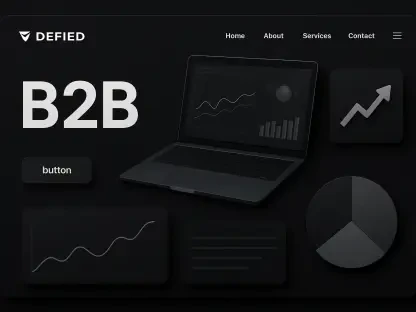E-commerce businesses today face an uphill battle to maximize return on investment (ROI) while navigating a crowded digital marketplace, and with email marketing remaining a cornerstone of customer engagement, platforms like Klaviyo have dominated the space for years, offering robust tools for automation and personalization. However, as budgets tighten and scaling challenges mount, many brands are searching for alternatives that deliver comparable power at a fraction of the cost. This roundup gathers insights, tips, and reviews from industry professionals, marketers, and tech analysts to explore the best substitutes for Klaviyo, aiming to help e-commerce businesses optimize their marketing strategies and drive sustainable growth.
Navigating the Shift in E-Commerce Marketing Tools
The landscape of e-commerce marketing tools is undergoing a significant transformation as businesses prioritize cost-effective solutions. Industry observers note that while Klaviyo has set a high standard with its advanced segmentation and analytics, its pricing structure often alienates small to mid-sized brands looking to scale. A growing chorus of digital marketers emphasizes the need for platforms that balance affordability with functionality, ensuring that even lean teams can compete in a saturated market.
Feedback from various e-commerce forums highlights a consensus: the demand for alternatives stems from a desire to reduce overhead without sacrificing critical features like automation or integration capabilities. Many professionals point out that newer tools are stepping up with innovative pricing models and user-centric designs, challenging the status quo. This shift reflects a broader trend toward democratizing access to powerful marketing technology for businesses of all sizes.
Analysts also stress that the right tool can redefine a brand’s approach to customer engagement, particularly when budgets are constrained. The insights gathered suggest that exploring substitutes for Klaviyo isn’t just about cutting costs—it’s about finding platforms that align with specific growth goals. This section sets the stage for a deeper look into standout options that have captured the attention of the e-commerce community.
Exploring Leading Platforms to Boost E-Commerce Performance
Affordability as a Game-Changer in Marketing Automation
One of the loudest concerns among e-commerce marketers revolves around the steep costs associated with premium tools like Klaviyo, especially as subscriber lists expand. Insights from small business owners reveal that switching to more budget-friendly platforms can slash marketing expenses by up to 30%, based on comparative studies shared in industry reports. These savings often allow reinvestment into other growth areas, such as product development or paid ads.
However, not all opinions align on the value of low-cost solutions. Some seasoned marketers caution that opting for cheaper alternatives can sometimes mean missing out on sophisticated analytics or reliable support, which are vital for data-driven decisions. A balanced view from tech consultants suggests evaluating whether the trade-off in features is worth the financial relief, particularly for brands with complex campaign needs.
The discussion around affordability also brings success stories to light, with several mid-sized retailers noting significant improvements in profit margins after adopting flexible pricing models. These anecdotes, shared across marketing webinars, underscore that cost isn’t just a number—it’s a strategic factor in sustaining long-term operations. The consensus leans toward prioritizing platforms that offer scalable plans without hidden fees.
Seamless Integration and Customization for Tailored Campaigns
Integration with existing e-commerce ecosystems like Shopify and WooCommerce ranks high among priorities for marketers seeking Klaviyo replacements. Feedback from tech integration specialists highlights that seamless data flow between platforms is non-negotiable for creating personalized customer experiences. Tools that fail to sync effectively often lead to fragmented data, hampering campaign precision.
Case studies circulating in marketing communities showcase platforms like Omnisend, praised for its drag-and-drop builders that simplify custom campaign creation. Retailers report noticeable efficiency gains, with some cutting campaign setup time by half due to intuitive interfaces and prebuilt templates. These real-world examples underline the competitive edge gained through adaptability over rigid, one-size-fits-all systems.
On the flip side, a minority of users warn that over-reliance on customization can complicate workflows if not supported by robust documentation or customer service. Insights from e-commerce meetups suggest that while tailored campaigns are powerful, the risk of data silos looms large with poorly integrated tools. The advice is clear: prioritize platforms that offer both flexibility and compatibility to avoid operational bottlenecks.
Multi-Channel Automation and Emerging Capabilities
The rise of all-in-one platforms combining email, SMS, and push notifications has sparked excitement among digital strategists as a future-proof approach to customer engagement. Observations from global market analyses indicate a sharp uptick in multi-channel adoption, especially in dynamic regions like Asia-Pacific, where consumer behavior demands diverse touchpoints. This trend signals a shift away from single-channel reliance.
Contrasting views emerge on whether an email-only focus still holds value in today’s landscape. While a few traditional marketers argue for mastering one medium before expanding, the majority, including automation experts, advocate for broader engagement tools to capture attention across platforms. Predictions shared in industry panels hint at AI-driven automation further reshaping how multi-channel strategies evolve over the next few years, starting from 2025.
The discussion also touches on scalability, with many e-commerce leaders noting that integrated automation saves time and boosts conversion rates by delivering consistent messaging. Tips from campaign managers emphasize testing multi-channel features during trial periods to gauge impact on audience response. This collective wisdom pushes brands to rethink outdated tactics in favor of holistic solutions.
Balancing User-Friendliness with Advanced Features
Ease of use remains a critical factor for non-technical teams managing marketing efforts, according to feedback from small business communities. Platforms like Brevo earn praise for intuitive dashboards that simplify complex tasks, enabling staff without coding skills to execute campaigns effectively. This accessibility is seen as a democratizing force in the industry.
Comparatively, tools like ActiveCampaign, while feature-rich with deep automation and CRM integration, draw mixed reviews for their learning curve. Marketing consultants point out that the depth of functionality can overwhelm beginners, though it proves invaluable for experienced users seeking granular control. The debate centers on whether simplicity or sophistication should take precedence based on team expertise.
Speculation from tech blogs suggests that making advanced tools accessible to all could level the playing field, allowing smaller brands to rival giants without hiring specialized staff. The shared opinion leans toward platforms that strike a balance, offering guided setups alongside powerful analytics. This approach ensures that innovation doesn’t come at the cost of usability for growing businesses.
Key Insights and Practical Steps for Choosing a Platform
Diving into the collective insights, several critical factors define the strongest Klaviyo alternatives: affordability, seamless integration, multi-channel capabilities, and user-friendliness. Marketers across discussion groups agree that prioritizing ROI means assessing how each platform aligns with specific operational needs, from cost structures to automation depth. This unified perspective helps narrow down choices in a crowded market.
A practical checklist emerges from the roundup, with tips including a thorough review of pricing tiers to avoid unexpected costs, hands-on testing of integrations with existing systems, and ranking automation features based on business scale. Community advice also stresses the importance of scalability, ensuring the chosen tool grows alongside the brand without requiring frequent migrations.
Many professionals recommend starting with free plans or trials, such as those offered by Omnisend or Brevo, to experiment with functionalities risk-free. This low-stakes approach, endorsed in marketing podcasts, allows businesses to gauge real-world performance before committing financially. The overarching suggestion is to remain flexible, adapting tool selection as goals and customer behaviors evolve.
Why the Right Marketing Tool Drives E-Commerce Growth
Reflecting on the insights gathered, it becomes evident that selecting an optimal marketing platform transcends merely replacing Klaviyo—it unlocks new avenues for customer engagement and revenue growth. The diverse opinions and tips shared by industry voices paint a picture of an evolving digital landscape where adaptability proves essential for staying competitive.
Looking back, the discussions underscore that the journey doesn’t end with choosing a tool; it requires ongoing evaluation to ensure alignment with shifting market demands. Marketers are encouraged to delve deeper by exploring user communities and industry reports for updated reviews on emerging platforms. Taking the next step means committing to a cycle of testing, learning, and refining strategies to sustain momentum in e-commerce success.









